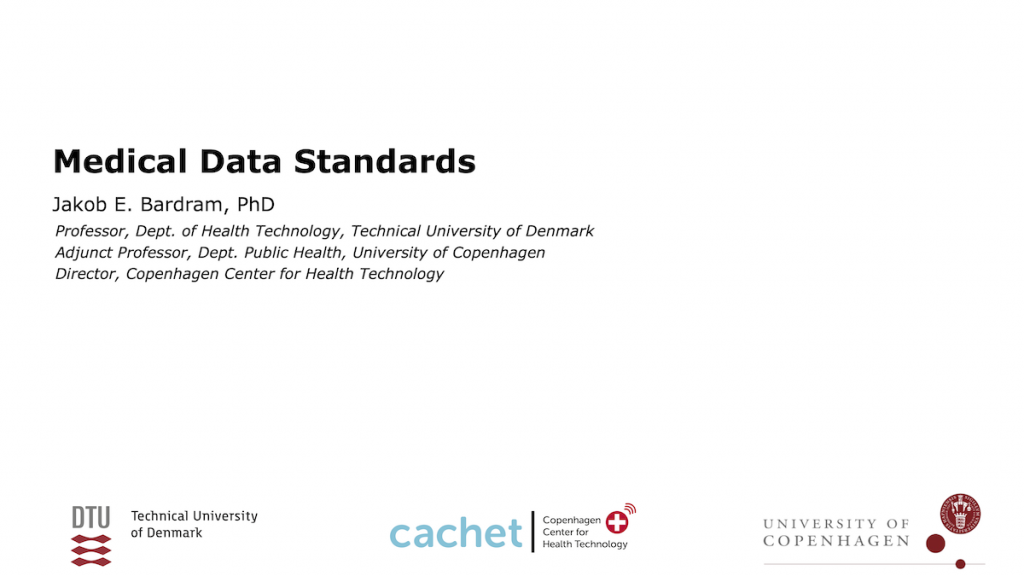Today I had the pleasure to talk about health data standards in the class on “Health Data and Interoperability” at the Medical Informatics education, run by Thomas Hildebrandt at the University of Copenhagen.
I was using two cases to motivate the need for data standards; (i) the work on creating Clinical Logistics technology for hospital use and (ii) the work on mobile health (mHealth) technology in the mCardia project. These are two very different types of health technologies, but they all put up some basic needs and challenges for data integrations, as summarized as…
How can we integrate with the “big” systems?
- Patient Administration System (PAS)
- Electronic Medical Record (EMR)
- Booking and Scheduling
What needs to be integrated
- Patient information (ID, name, diagnosis, ward, …)
- Clinical information (diagnosis, …)
- Medical device information (type, configuration, instructions, …)
- Booking & scheduling information, incl. resources (staff, rooms, equipment, …)
- Procedure (operation, type, …)
- Real-time data (status, …)
- Communication (messages, video, ….)
- Observations (physical activity, behavior, sleep, HR, HRV, MET, ECG, PRO, ….)
- … and many other types of data
All of this calls for the use of several standards (and one of the main messages in the talk was that there’s not a lack of standards in health technology –– on the contrary, there are a wealth of standards for all sorts of (competing) things). For example, the “Standards Catalogue” from the Danish integration organization MedCom lists in total of 154 standards used in the Danish Healthcare System….!
In the talk, however, I focused on three standards, which I find most useful:
At the end of the lecture, I asked the students to solve a few simple standard-related exercises, like
#1 – Write yourself as a FHIR Patient object in JSON.
#2 – Take a look at the Apple Health app on your phone. How would you represent the “walking” activity you did yesterday as an IEEE P1752 physical-activity JSON object?
#3 – Same question as #2, but in the FHIR format. (Hint: you may use the FHIR Observation document).
Can you do this?
The slides are available for download below.


